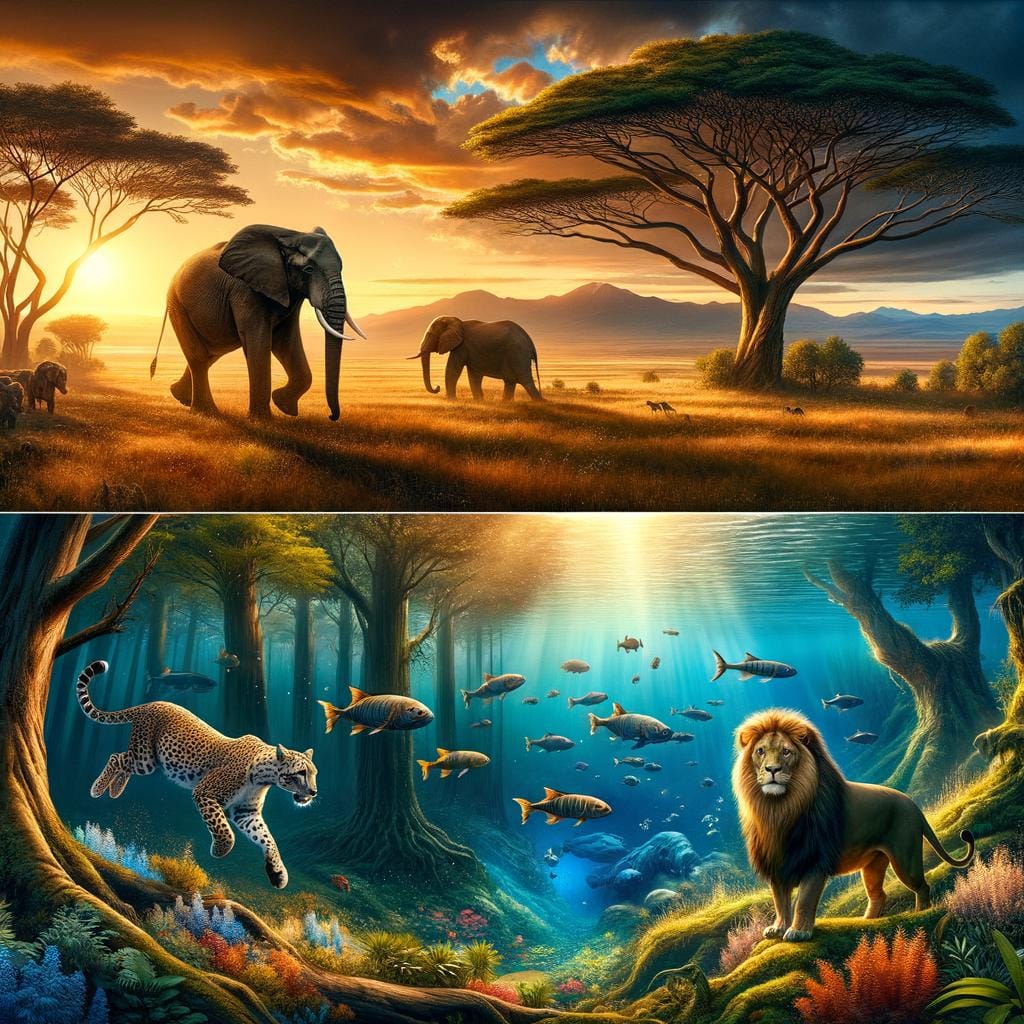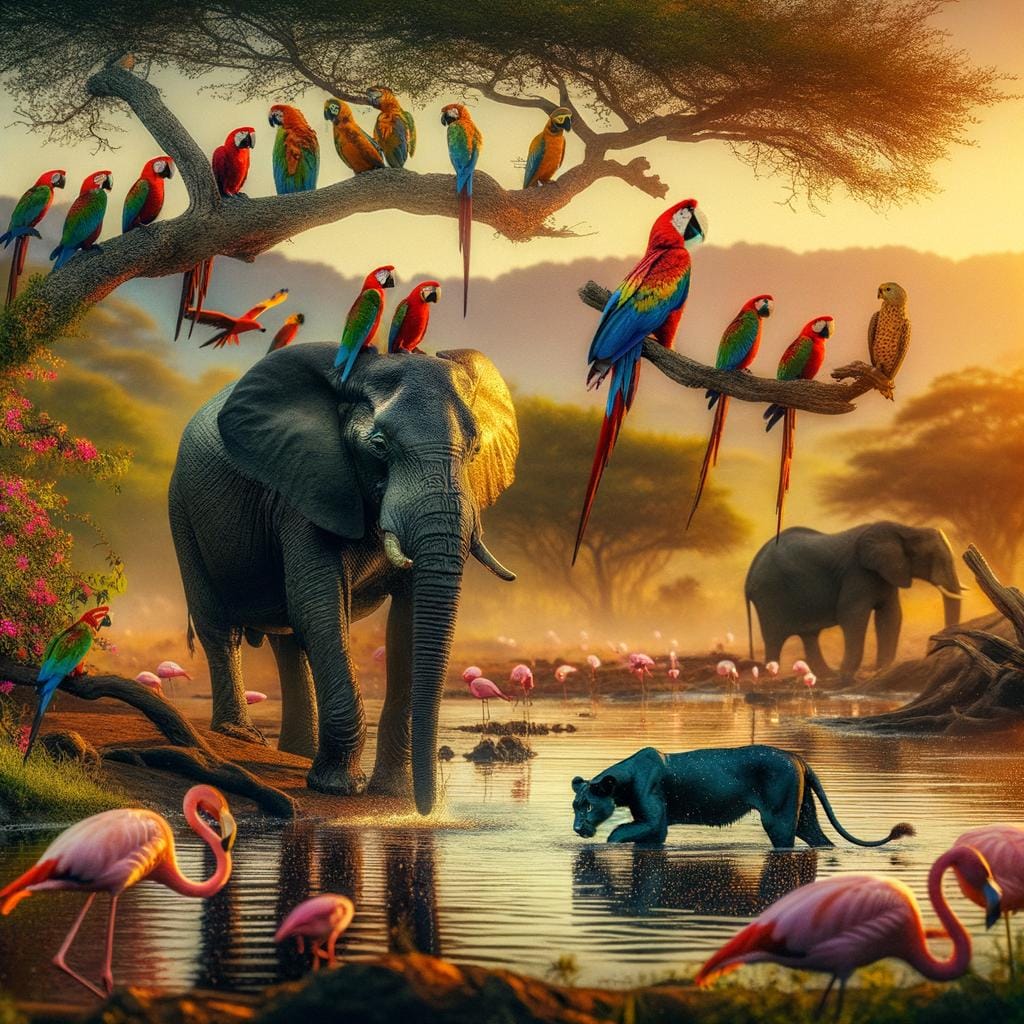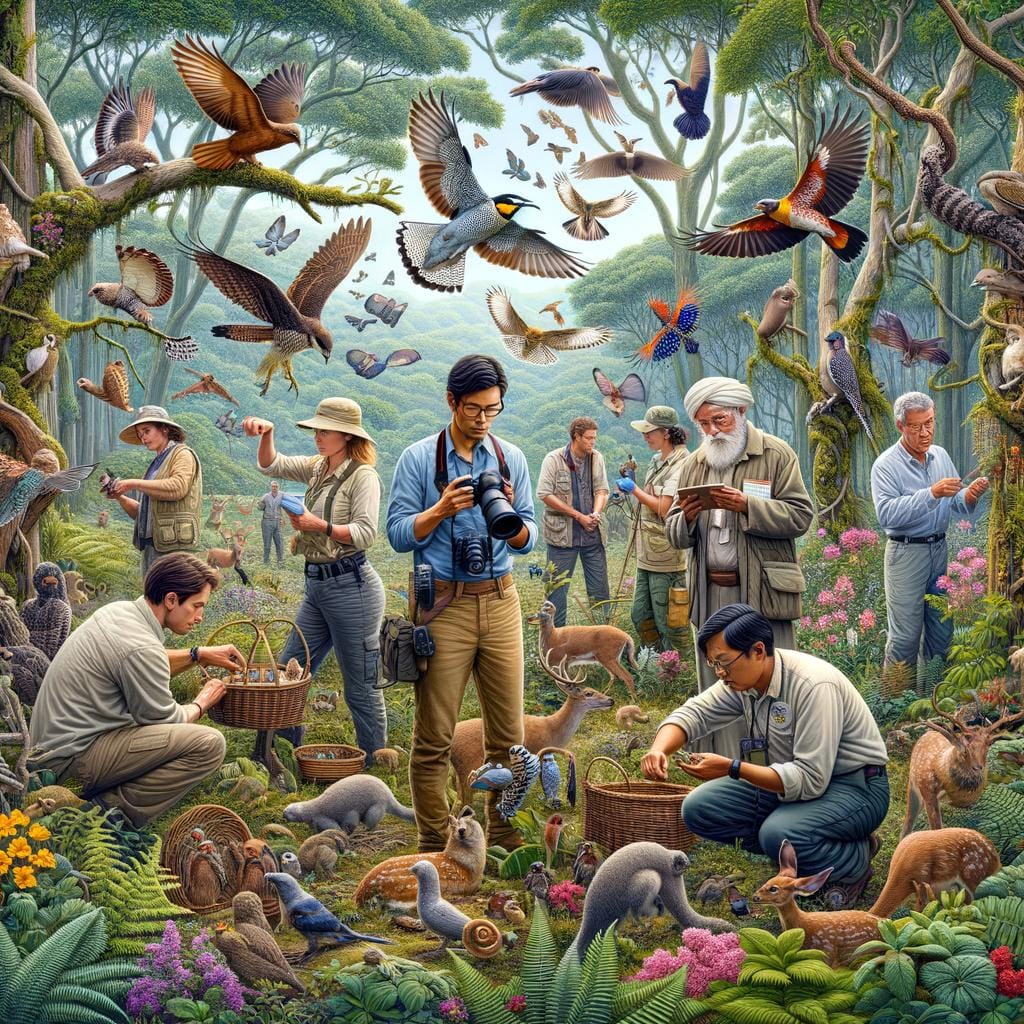Wildlife shots, also known as wildlife photography, capture the beauty and essence of animals in their natural habitats. These images not only serve as stunning visuals but also play a crucial role in raising awareness about the importance of wildlife conservation. With the right equipment and techniques, photographers can capture incredible moments that showcase the wonder and diversity of the animal kingdom.
In a world where many species are facing threats to their existence, wildlife shots provide a unique opportunity to shed light on the plight of endangered animals and promote conservation efforts. Through these images, viewers can connect with nature on a deeper level and develop a greater appreciation for the beauty and fragility of our planet’s ecosystems. By sharing these captivating photographs, photographers can inspire others to take action and contribute to the preservation of wildlife and their habitats.
For aspiring wildlife photographers, understanding the equipment needed for capturing these shots is essential. From telephoto lenses to tripods, having the right gear can make all the difference in getting that perfect shot. Additionally, mastering top tips for composition, lighting, and animal behavior can elevate your wildlife photography skills and help you create truly stunning images that tell stories and evoke emotions.
The Importance of Wildlife Conservation
Wildlife conservation plays a critical role in protecting the diverse array of animals and their habitats around the world. By preserving these ecosystems, we not only safeguard the future of various species but also maintain the delicate balance of our planet’s biodiversity. Wildlife shots can serve as powerful tools to raise awareness about the importance of conservation efforts and to highlight the beauty and significance of these creatures in their natural environments.
Impact of Wildlife Conservation
Conservation efforts aim to address issues such as habitat destruction, poaching, climate change, and human-wildlife conflict that threaten the survival of many species. Through wildlife shots, photographers can document these challenges faced by animals and showcase the urgent need for action to protect them. Capturing images of endangered species or documenting conservation success stories can inspire people to support initiatives that promote wildlife preservation.
Role of Wildlife Photographers
Wildlife photographers often act as advocates for conservation by using their photographs to tell compelling stories that resonate with audiences worldwide. Their images have the power to evoke emotional responses from viewers, sparking interest, empathy, and ultimately driving action towards protecting wildlife and their habitats. By sharing their wildlife shots through various platforms, photographers contribute to raising awareness about environmental issues and promoting sustainable practices for a better future for all living beings.
Equipment Needed for Capturing Wildlife Shots
Capturing stunning wildlife shots requires the right equipment to ensure that you can capture those fleeting moments in nature. One of the most essential pieces of gear for wildlife photography is a reliable camera with a good autofocus system. This is crucial for capturing fast-moving animals in the wild. A camera with a high frames-per-second rate can also be beneficial when shooting wildlife, especially birds in flight or animals on the move.
In addition to a quality camera, a telephoto lens is another indispensable piece of equipment for capturing wildlife shots. A telephoto lens allows you to zoom in on your subjects without disturbing them, enabling you to get up close and personal shots while maintaining a safe distance. The focal length of your lens will depend on the type of wildlife you are photographing, with longer focal lengths typically being used for smaller or more skittish animals.
Other gear that can enhance your wildlife photography includes a sturdy tripod or monopod to stabilize your shots, especially when using heavy telephoto lenses. A remote shutter release can also be handy for minimizing camera shake.
Additionally, consider investing in camouflage clothing or covers to blend into your surroundings and not startle the animals you are photographing. By having the right equipment at your disposal, you will be better equipped to capture incredible wildlife shots and truly appreciate the beauty of nature.
| Equipment Needed | Description |
|---|---|
| Camera with good autofocus system | Essential for capturing fast-moving animals |
| Telephoto lens | Allows zooming in without disturbing wildlife |
| Tripod or monopod | Stabilizes shots, especially with heavy lenses |
Top Tips for Taking Incredible Wildlife Shots
Capturing incredible wildlife shots requires a combination of skill, patience, and the right techniques. Here are some top tips to help you improve your wildlife photography skills and capture stunning images of animals in their natural habitat.
First and foremost, it is essential to research and understand the behavior of the wildlife you are photographing. This knowledge will help you anticipate their movements and position yourself for the best shot. Spend time observing your subjects from a distance before approaching them closely to avoid causing them stress or disrupting their natural behavior.
Secondly, be prepared with the right equipment for wildlife photography. A telephoto lens is essential for capturing detailed shots from a distance without disturbing the animals. Additionally, consider using a tripod or stabilizing device to ensure sharp images, especially in low light conditions or when capturing fast-moving subjects like birds in flight.
Lastly, always be mindful of your surroundings and look for unique angles or perspectives to create visually interesting wildlife shots. Experiment with different compositions, lighting conditions, and camera settings to add variety to your portfolio. Remember that patience is key in wildlife photography, as the perfect moment can sometimes require hours or even days of waiting for that one captivating shot.
By following these top tips for taking incredible wildlife shots, you can enhance your skills as a wildlife photographer and create stunning images that showcase the beauty and diversity of nature. Remember to prioritize respect for the animals and their habitat while capturing these moments, ensuring that future generations can also appreciate the wonders of wildlife through your photography.
Best Locations for Wildlife Photography
When it comes to capturing stunning wildlife shots, the location plays a crucial role in the success of the photograph. Different regions around the world offer unique opportunities to observe and photograph a wide variety of wildlife in their natural habitats.
One of the best locations for wildlife photography is Africa, known for its diverse range of species such as lions, elephants, giraffes, and many more. Safaris in countries like Kenya, Tanzania, Botswana, and South Africa provide photographers with amazing chances to get up close to these majestic animals.
Another top location for wildlife photography is the Galapagos Islands, famous for its abundance of endemic species that are found nowhere else on Earth. From giant tortoises to marine iguanas and blue-footed boobies, this archipelago offers unparalleled opportunities to capture truly unique and rare wildlife shots. The pristine and untouched environment of the Galapagos Islands provides photographers with a once-in-a-lifetime chance to document these incredible creatures in their natural habitat.
For those looking for a different experience, Antarctica is also a fantastic location for wildlife photography. Home to colonies of penguins, seals, whales, and seabirds, Antarctica offers photographers the chance to capture some of the most breathtaking yet challenging wildlife shots. The icy landscapes and dramatic lighting create a stunning backdrop for capturing these incredible animals in their harsh but beautiful environment. Wildlife enthusiasts will find endless opportunities for exploring and photographing the unique fauna that call Antarctica home.
Stories Behind Iconic Wildlife Shots
National Geographic’s Most Memorable Captures
Some of the most iconic wildlife shots have been captured by the talented photographers working for National Geographic. These images not only showcase the beauty of wildlife but also tell compelling stories about the animals themselves. One such example is the famous photograph of a lioness and her cubs taken in the Serengeti, showing a tender moment between mother and offspring. These powerful images help raise awareness about conservation issues and inspire people to appreciate and protect our natural world.
Behind the Lens: Steve McCurry’s Gorilla Portrait
Photographer Steve McCurry is known for his breathtaking portraits that capture the essence of his subjects, including a remarkable shot of a gorilla that has become an iconic image in wildlife photography. The intense gaze of the gorilla in this photograph speaks volumes about the intelligence and majesty of these incredible animals. McCurry’s ability to connect with his subjects and convey emotions through his photography is what makes this shot so memorable.
The Legacy of Ansel Adams
Ansel Adams may be more renowned for his landscape photography, but his work also includes stunning wildlife shots that showcase his technical skill and artistic vision. One of his most famous images features a bald eagle soaring through Yosemite National Park, symbolizing freedom and wilderness. Adams’ dedication to capturing the beauty of nature in all its forms continues to inspire photographers around the world to seek out their own memorable wildlife shots.
Editing and Post-Processing Wildlife Shots
Editing and post-processing play a crucial role in enhancing the quality of wildlife shots, ensuring that the photographs truly capture the beauty and essence of the animals. Here are some tips and techniques to help you make your wildlife shots stand out:
1. Use RAW Format: Shooting in RAW format allows for more flexibility during post-processing, as it retains more information than JPEG files. This gives you more control over adjusting exposure, color balance, and sharpness without compromising image quality.
2. Adjust White Balance: Correcting the white balance in your wildlife shots can significantly improve the overall look of the photograph. Depending on the lighting conditions when you took the shot, you may need to adjust the temperature and tint to achieve a more natural and pleasing result.
3. Focus on Details: When editing wildlife shots, pay close attention to fine details such as fur texture, feather patterns, or eye clarity. Use selective sharpening tools to enhance these features while maintaining a natural look.
In addition to editing techniques, it is important to remember ethical considerations when working with wildlife shots. Always strive to represent nature accurately and respectfully through your photography practices. Through thoughtful editing and post-processing, you can create stunning wildlife shots that not only showcase your skills as a photographer but also raise awareness about the importance of conservation efforts for our precious wildlife populations.
Wildlife Photography Ethics
Wildlife photography is not just about capturing stunning images of animals in their natural habitat; it also entails a great responsibility towards the subjects and their environment. Respecting the animals and their habitat is crucial to ensure the well-being of wildlife populations and conservation efforts. As wildlife photographers, it is essential to follow ethical guidelines to minimize our impact on the animals while still capturing compelling shots.
Here are some key principles of wildlife photography ethics to keep in mind:
- Avoid disturbing or harassing the animals: It is important to maintain a safe distance from wildlife and observe them without causing stress or disruption to their behavior.
- Do not feed or bait animals for photos: Feeding wild animals can alter their natural behaviors, disrupt ecosystems, and even harm their health. It is best to let them find food sources on their own.
- Respect protected areas and regulations: Follow local laws and guidelines when photographing wildlife in national parks or conservation areas. Be aware of restricted areas where access is prohibited to protect vulnerable species.
By adhering to these ethical principles, we can ensure that our wildlife shots have a positive impact on conservation efforts and contribute to raising awareness about the beauty and importance of nature. As responsible photographers, let us prioritize the well-being of wildlife over getting the perfect shot at any cost.
Conclusion
In conclusion, Wildlife Shots are not just photographs of animals but also serve as a powerful medium to raise awareness about the importance of wildlife conservation. By capturing these incredible creatures in their natural habitat, we can showcase their beauty and vulnerability, inspiring others to join in the efforts to protect them and their ecosystems.
It is crucial for wildlife photographers to not only focus on getting the perfect shot but also to prioritize the well-being of the animals and respect their habitats. Through responsible photography practices, we can ensure that our passion for capturing wildlife shots does not harm or disturb the subjects we seek to celebrate.
As we navigate through the world of wildlife photography, let us remember that every click of our camera shutter has the potential to make a difference. By sharing our experiences, techniques, and stories behind our iconic shots, we can encourage more individuals to pick up a camera, explore nature’s wonders, and contribute to the conservation of our planet’s precious wildlife.
Together, let us all strive to preserve these extraordinary moments in time and protect the magnificent creatures that share this Earth with us.
Frequently Asked Questions
How Do You Take Wildlife Shots?
Taking wildlife shots requires patience, observation, and the right equipment. It’s essential to research your subject, understand their behavior, and choose the right time of day for optimal lighting. Keeping a safe distance and using a telephoto lens can help capture sharp, detailed images without disturbing the animals.
What Is Wildlife Photography Called?
Wildlife photography is commonly referred to as “wildlife photography.” This genre of photography focuses on capturing images of animals in their natural habitats, showcasing their behavior, interactions, and beauty. Wildlife photographers often spend hours tracking subjects and waiting for the perfect moment to take a shot.
What Shutter Speed Should I Use for Wildlife?
When photographing wildlife, using a fast shutter speed is crucial to freeze motion and capture sharp images. The ideal shutter speed will vary depending on the speed of the animal’s movement and lighting conditions.
In general, it’s recommended to use a shutter speed of at least 1/500th of a second or faster to ensure crisp photos without motion blur. Experimentation with different settings can help determine the best shutter speed for each unique situation.

An avid outdoor enthusiast, writer, and environmental advocate who has spent over two decades exploring the world’s most breathtaking landscapes. With a background in environmental science and a passion for adventure, Frances combines her love for nature with her talent for storytelling to inspire others to embark on their own outdoor journeys.



